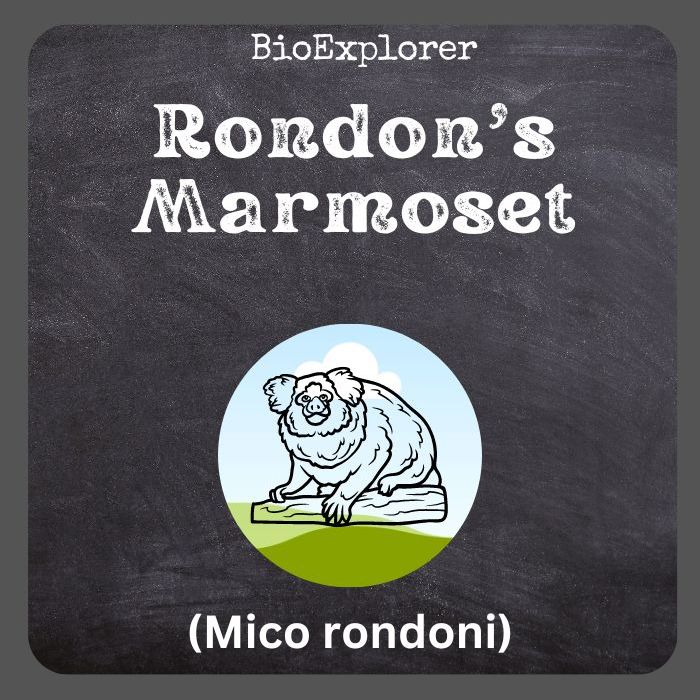
| Animalia | Primates | Callitrichidae | Mico | Mico rondoni |

- Common Name: Rondon’s Marmoset
- Taxonomy Classification Year: 2010
- Monkey Size: 22 to 22 cm (8.7 to 8.7 in)
- Skin Color(s): Silvery-gray
- Habitat: Forest
- Diet: Omnivorous
- Native Countries: Brazil
Rondon’s Marmoset Distribution
Rondon’s Marmoset Characteristics
Rondon’s marmoset[1] (Mico rondoni), also called the Rondônia marmoset, is a small species of monkey in the Callitrichidae family found in the southwestern Amazon of Brazil.
- It is native to the state of Rondônia. Its range borders the Madeira River, the Mamore River, the Serra dos Pacaás Novos, the Ji-Paraná River, and possibly Bolivia.
- Rondon’s marmoset is part of the Silvery marmoset (M. argentatus) group within the Mico genus. Like others of its group, its fur is usually silver-gray.
- It has dark fur over much of its head, forehead, and sides, contrasting with a whitish patch in the center of its forehead.
- The fur on their paws turns reddish-brown on the calves and almost black on the ankles. Its tail is primarily black.
- It weighs about 330 grams (12 ounces) on average. The length, excluding the tail, averages 22 centimeters (8.7 in), and the tail averages 31 centimeters (12 in).
Rondon’s Marmoset Facts
- Rondon’s marmoset was only described in 2010, and its name refers to the famous Amazon explorer Cândido Rondon. Before its description, it was included in Emilia’ Emilia‘et (Mico emiliae).
- Exudates are an essential part of Rondon’s marmoset diet. Like other marmosets, its digestive tract is specially adapted for this purpose. Adaptations include chisel-shaped lower incisors that can dig into gum-producing shafts to initiate exudate flow and an enlarged cecum to help digest exudate.
- Although able to tolerate habitat disturbance, Rondon’s marmoset is perhaps the most endangered species in the Mico genus.
- A characteristic of Mico rondoni sp. ecology is its friendliness throughout its range with the similarly sized marmoset – Saguinus fuscicollis weddelli – that may be a critical factor in determining the rarity or absence of the new species in many areas of its geographical range.
- The geographical range of the new species is defined as the area bounded by the Mamore, Madeira, and Jiparaná rivers to the west, north, and east and by the Serra dos Pacaás Novos to the south, where it is replaced by M. melanurus.
Suggested Reading: Types of Different Monkeys
Cite This Page
APA7MLA8Chicago
BioExplorer.net. (2025, January 02). Rondon’s Marmoset. Bio Explorer. https://www.bioexplorer.net/animals/mammals/monkeys/rondons-marmoset/.
BioExplorer.net. "Rondon’s Marmoset" Bio Explorer, 02 January 2025, https://www.bioexplorer.net/animals/mammals/monkeys/rondons-marmoset/.
BioExplorer.net. "Rondon’s Marmoset" Bio Explorer, January 02 2025. https://www.bioexplorer.net/animals/mammals/monkeys/rondons-marmoset/.
















